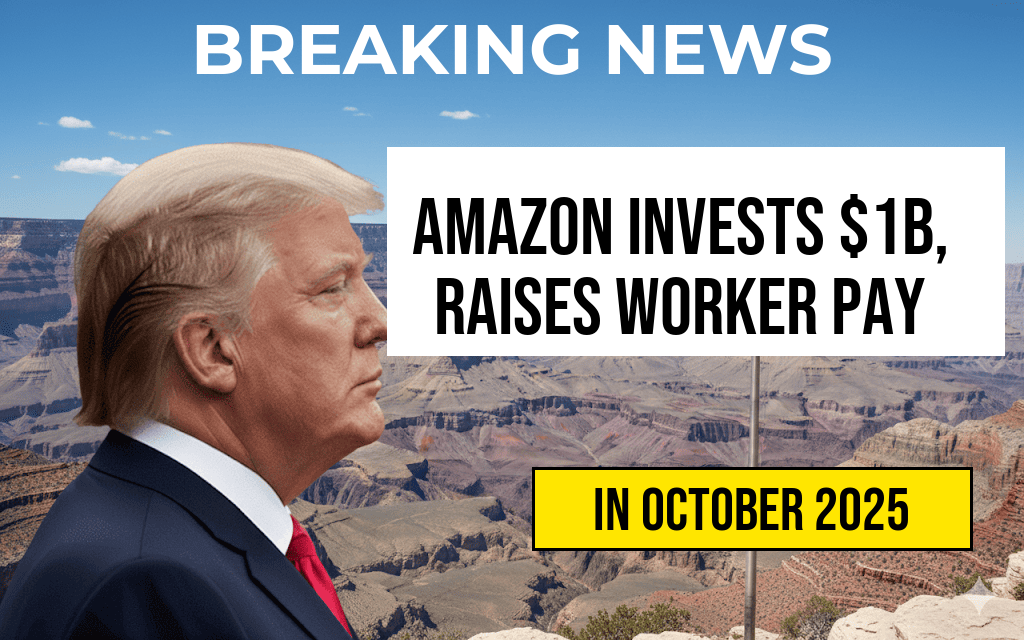Amazon has announced a significant investment of over $1 billion aimed at increasing wages and improving working conditions for its fulfillment center employees across the United States. The move pushes the company’s average pay for fulfillment workers beyond $23 per hour, marking a notable shift in its labor strategy amid ongoing industry labor shortages and heightened public scrutiny. This substantial financial commitment not only underscores Amazon’s efforts to attract and retain talent but also signals a broader industry trend toward enhanced worker compensation. As the e-commerce giant continues to expand its logistics network, the impact of this investment is expected to ripple through the labor market, potentially prompting competitors to reevaluate their wage structures.
Wage Growth and Investment Details
Scope of the Investment
Amazon’s $1 billion investment is allocated toward a multifaceted approach, including wage hikes, benefits enhancements, and safety improvements. The company has stated that the funds will be distributed over the next year, targeting both existing and new fulfillment center employees. This initiative aims to bolster overall compensation, with a specific focus on hourly wages.
Impact on Average Pay
| Period | Average Hourly Pay |
|---|---|
| Before Investment | $21.50 |
| After Investment | $23.10 |
Data indicates that the average hourly wage for Amazon fulfillment workers has increased by approximately 7.4%, reaching over $23 per hour. This rise reflects the company’s commitment to competitive pay, especially amid a labor market that has seen increased demand for warehouse and logistics roles.
Industry Context and Worker Benefits
Broader Labor Market Trends
Amazon’s wage increase aligns with a broader industry pattern where logistics and supply chain companies are raising pay to address persistent labor shortages. According to industry reports, the U.S. warehouse sector has experienced a 15% increase in wages over the past year, driven by competitive pressures and the need to attract skilled workers in a tight labor market (source). Amazon’s investment positions it to maintain its dominant stance in e-commerce logistics, while also responding to calls for better worker compensation.
Enhancements Beyond Wages
- Safety Improvements: The company has pledged to invest in safety measures, including new equipment and training programs aimed at reducing workplace injuries.
- Benefits Expansion: Workers will gain access to enhanced health benefits, paid parental leave, and career development programs.
- Workplace Conditions: Amazon has committed to improving ergonomic conditions and reducing mandatory overtime demands, seeking to create a more sustainable work environment.
Reactions and Industry Implications
Labor Community Response
Labor advocates have largely welcomed Amazon’s increased investment, viewing it as a step toward recognizing the vital role fulfillment workers play in the company’s success. “This significant wage boost demonstrates that Amazon is listening to its workers and acknowledges the importance of fair pay in a competitive labor market,” says Jessica Williams, a labor rights researcher (source). However, some union advocates remain skeptical about whether these changes will lead to lasting improvements or merely serve as a short-term strategy to quell dissent.
Competitive Landscape
Other industry giants, such as Walmart and FedEx, are also increasing wages and benefits in response to similar labor challenges. This competitive pressure is reshaping compensation standards in the logistics sector, prompting a reevaluation of operating costs versus talent retention strategies.
Future Outlook
Amazon’s recent wage increase and the infusion of over a billion dollars into fulfillment workforce improvements highlight a strategic pivot toward valuing employee contributions more prominently. As the company continues to expand its delivery network and explore automation technologies, maintaining a skilled and motivated workforce remains critical. Industry analysts suggest that these initiatives could set a precedent, encouraging other corporations to prioritize human capital investments amidst evolving economic conditions.
For additional insights on Amazon’s logistics investments and labor policies, visit Forbes and Wikipedia’s E-commerce page.
Frequently Asked Questions
What is the purpose of Amazon’s one billion dollar investment?
Amazon’s one billion dollar investment aims to enhance the compensation and working conditions of its fulfillment workers, including increasing their average pay to over twenty-three dollars per hour.
How has Amazon’s investment impacted fulfillment workers’ wages?
The investment has resulted in an increase to the average pay for fulfillment workers, raising it to over twenty-three dollars per hour, providing better financial stability and benefits.
What specific improvements are expected for Amazon’s fulfillment centers?
Amazon plans to use the investment to improve workplace safety, increase pay, and implement technological upgrades to make fulfillment processes more efficient and worker-friendly.
How does this investment compare to Amazon’s previous initiatives?
This one billion dollar initiative builds on Amazon’s previous efforts to raise wages and improve worker conditions, representing a significant commitment to enhancing employee compensation.
Will this investment affect customer service or delivery times?
By investing in fulfillment workers and technology, Amazon aims to maintain or improve delivery times and customer service quality while ensuring worker satisfaction.

Leave a Reply